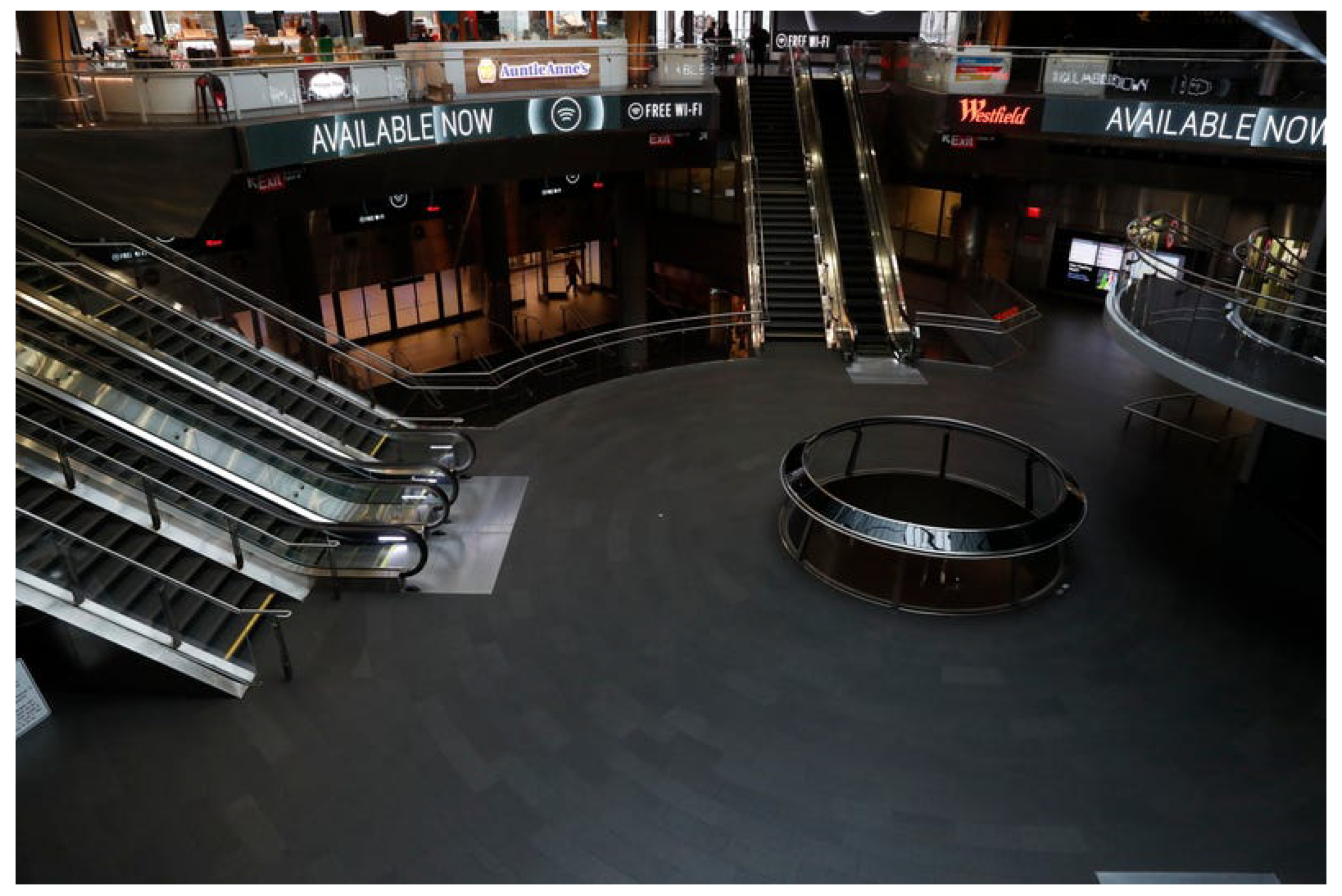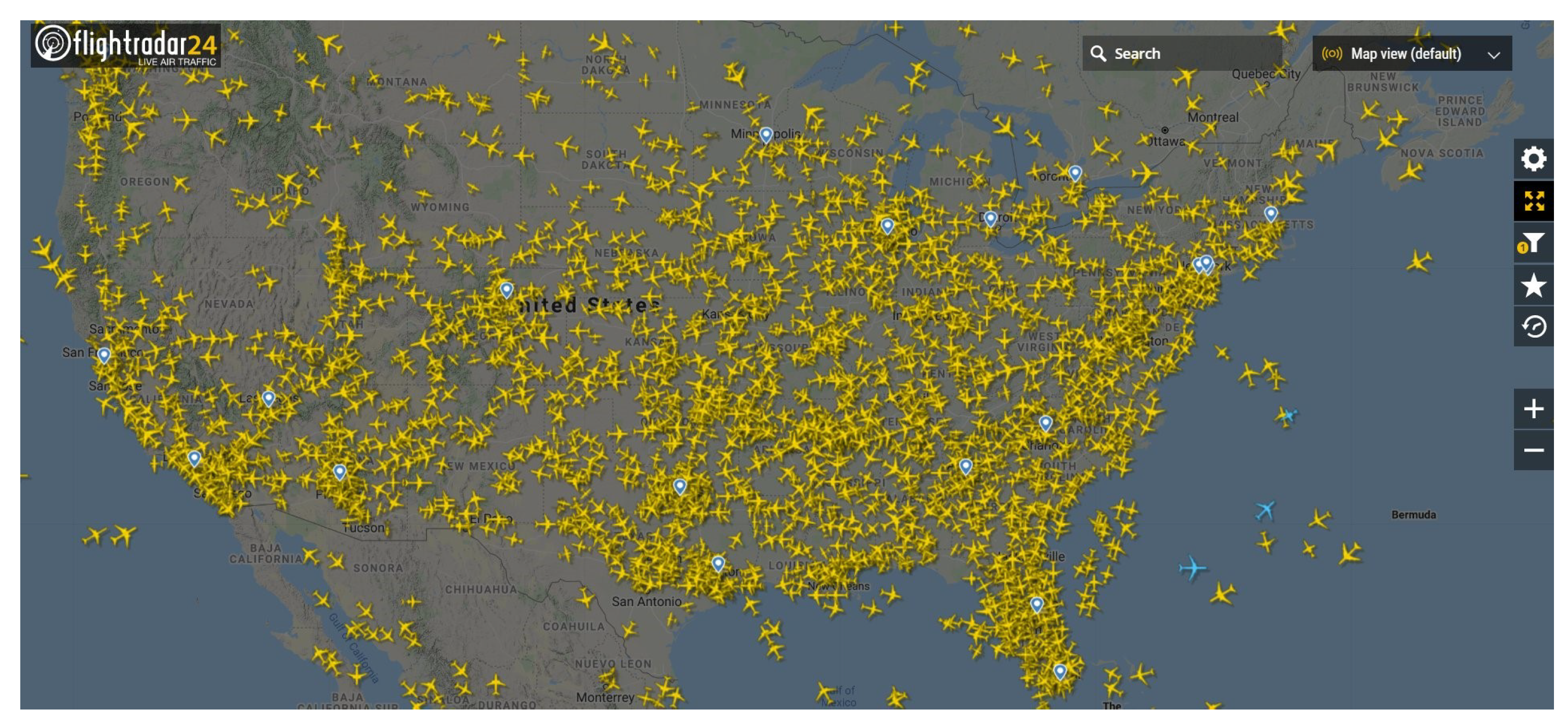COVID-19: Modeling, Prediction, and Control
Abstract
:1. Introduction
2. COVID-19 Mathematical Modeling
2.1. Statistical Power Series Model
2.2. Lotka-Volterra Dynamic Model
- Immigration: This due to the individual travels between different zones. When people move from a destination to another destination (of interest), the size of the population in the destination will increase linearly. and are the immigration rates of healthy individuals and infected individuals, respectively. For example, the travel bans between different destinations means that the values of immigration rates are zero. It is obvious that and when the individuals travel out of the destination. This implies that the size of the population will decrease.
- Infection: This due to the direct interactions between the healthy individuals and infected individuals. is the infection rate. The negative sign in the healthy population term indicates that the infection will reduce the number of healthy individuals which are, in turn, added to the infected population. The infection rate can be managed by reducing the interactions between healthy and infected individuals. Which in a perfect world when we have everyone adhere to social distancing, can be simply zero.
- Recovery: This indicates the infected individuals who got recovered and cured based on their self immunization; no medication was used. This population will be added to the healthy population. is the cure rate. We have no control cure rate since no medication or vaccine is available thus far. Figure 9 represents the global percentage of death (and recovered) cases relative to the total confirmed cases per day. The data represent the cases from 22 January until 31 March. These data can help quantify the value of that can be considered in this model. The global mean value is .
- Control: This indicates any possible control that can by imposed by governments. The control actions can be categorized into two aspects. First, the effectiveness of any potential vaccine to avoid infection of COVID-19 or potential medication to treat infected cases. The vaccine control is measured by , which will lead to an increase in the size of the healthy population. Whereas, the medication treatment is measured by . Thus, the control term can be modified as for the healthy population, and for the infected population. Since, no vaccine or medication is available to treat the COVID-19 cases, we can consider . Second, the control actions can be represented in terms of guidelines provided by the World Health Organization to reduce the spread of the coronavirus. Currently, there are five guidelines recommended by the World Health Organization to stop the spread of the coronavirus, see Figure 10.Thus the control actions can be given byFor demonstration purposes and due to the lack of data available to model these control behaviours, we consider a single normalized control action that is a contribution of all the above five guidelines in our model. Therefore, we can define:and . We suggest the normalization because there are no adequate data to analysis for each variable. We keep the main terms for future reference, when more reliable data become available. The normalization is only for demonstration purposes and is not practical without having sufficient and reliable data.
- Death: This indicates the infected individuals who died. is the death rate. Figure 9 represents global percentage of recovered (and death) cases relative to the total confirmed cases per day. This data will help quantify the values of that can be considered in this model. The global mean value is .
3. Extended Kalman Filter
- Initialization: at and for given initial states , the initial value of the covariance matrix is given by:andwhere the superscript (−) denotes a priori value. The initial covariance matrices are given byAssume that .
- Gain: compute the Kalman gain matrixwhere .
- Update: update the state estimate and covariance at each measurementwhere the superscript (+) denotes posteriori value.
- Propagation: propagate both the state estimate and covariance using the posteriori estimate and posteriori covariancewhere .
4. Control Authority and Regulation
5. Conclusions
Author Contributions
Funding
Conflicts of Interest
References
- Rismanbaf, A. Potential Treatments for COVID-19; a Narrative Literature Review. Arch. Acad. Emerg. Med. 2020, 8, e29. [Google Scholar] [PubMed]
- Coronavirus Disease (COVID-19) Pandemic. 2020. Available online: https://www.who.int/emergencies/diseases/novel-coronavirus-2019 (accessed on 29 March 2020).
- Available online: https://twitter.com/WHOWPRO/status/1219478547644813312?s=20 (accessed on 27 March 2020).
- Bogoch, I.I.; Watts, A.; Thomas-Bachli, A.; Huber, C.; Kraemer, M.U.G.; Khan, K. Pneumonia of unknown aetiology in Wuhan, China: Potential for international spread via commercial air travel. J. Travel Med. 2020, 27, taaa008. [Google Scholar] [CrossRef]
- Wu, J.; Leung, K.; Leung, G. Nowcasting and forecasting the potential domestic and international spread of the 2019-nCoV outbreak originating in Wuhan, China: A modelling study. Lancet 2020, 395, 689–697. [Google Scholar] [CrossRef] [Green Version]
- 13 Photos of New York City Looking Deserted as the City Tries to Limit the Spread of the Coronavirus. 2020. Available online: https://www.businessinsider.com/coronavirus-pictures-of-new-york-city-empty-streets-2020-3#empty-street-is-seen-in-manhattan-borough-following-the-outbreak-of-coronavirus-disease-covid-19-in-new-york-city-us-mar-15-2020-13 (accessed on 29 March 2020).
- Flight Tracking Statistics. 2020. Available online: https://www.flightradar24.com/data/statistics (accessed on 27 March 2020).
- Lin, Q.; Zhao, S.; Gao, D.; Lou, Y.; Yang, S.; Musa, S.; Wang, M.; Cai, Y. A conceptual model for the coronavirus disease 2019 (COVID-19) outbreak in Wuhan, China with individual reaction and governmental action. Int. J. Infect. Dis. 2020, 93, 211–216. [Google Scholar] [CrossRef] [PubMed]
- Bani-Younes, A. Orthogal Polynomial Approximation in Higher Dimensions: Applications in Astrodynamics. Ph.D. Thesis, Texas A&M University, College Station, TX, USA, 2013. [Google Scholar]
- Lotka, A.J. Contribution to the Theory of Periodic Reactions. J. Phys. Chem. 1910, 14, 271–274. [Google Scholar] [CrossRef] [Green Version]
- Goel, N.S.; Maitra, S.C.; Montroll, E.W. On the Volterra and Other Nonlinear Models of Interacting Populations. Rev. Mod. Phys. 1971, 43, 231–276. [Google Scholar] [CrossRef]
- Alshawaqfeh, M.; Serpedin, E.; Bani Younes, A. Inferring microbial interaction networks from metagenomic data using SgLV-EKF algorithm. BMC Genom. 2017, 18, 228. [Google Scholar] [CrossRef] [PubMed] [Green Version]
- Stein, R.R.; Bucci, V.; Toussaint, N.C.; Buffie, C.G.; Rätsch, G.; Pamer, E.G.; Sander, C.; Xavier, J.B. Ecological modeling from time-series inference: Insight into dynamics and stability of intestinal microbiota. PLoS Comput. Biol. 2013, 9, e1003388. [Google Scholar] [CrossRef] [PubMed]
- Crassidis, J.; Junkins, J. Optimal Estimation of Dynamic Systems; Chapman & Hall/CRC Applied Mathematics & Nonlinear Science; CRC Press: Boca Raton, FL, USA, 2011. [Google Scholar]














| Case | ||||||||
|---|---|---|---|---|---|---|---|---|
| 1 | 0 | 0 | 0 | 0.25 | 0.01 | 0 | 0.001 | 0.05 |
| 2 | 0.001 | 0.001 | 0.005 | 0.25 | 0.01 | 0 | 0.010 | 0.05 |
| 3 | 0.001 | 0.001 | 0.050 | 0.25 | 0.01 | 0 | 0.010 | 0.05 |
| 4 | 0 | 0 | vary | 0.25 | 0.05 | 0.025 | 0.010 | 0.05 |
| 5 | 0 | 0.100 | control | 0.25 | 0.01 | 0.010 | 0.010 | 0.05 |
© 2020 by the authors. Licensee MDPI, Basel, Switzerland. This article is an open access article distributed under the terms and conditions of the Creative Commons Attribution (CC BY) license (http://creativecommons.org/licenses/by/4.0/).
Share and Cite
Bani Younes, A.; Hasan, Z. COVID-19: Modeling, Prediction, and Control. Appl. Sci. 2020, 10, 3666. https://doi.org/10.3390/app10113666
Bani Younes A, Hasan Z. COVID-19: Modeling, Prediction, and Control. Applied Sciences. 2020; 10(11):3666. https://doi.org/10.3390/app10113666
Chicago/Turabian StyleBani Younes, Ahmad, and Zeaid Hasan. 2020. "COVID-19: Modeling, Prediction, and Control" Applied Sciences 10, no. 11: 3666. https://doi.org/10.3390/app10113666
APA StyleBani Younes, A., & Hasan, Z. (2020). COVID-19: Modeling, Prediction, and Control. Applied Sciences, 10(11), 3666. https://doi.org/10.3390/app10113666






